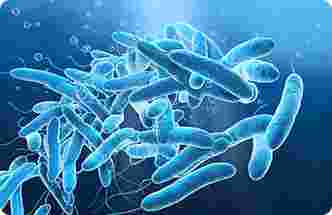Introduction
Amino acids are organic compounds that serve as the fundamental building blocks of proteins, which are essential for all biological processes. 20 standard amino acids combine in various sequences to form proteins, which are crucial for cell structure, enzyme function, and signaling pathways. Beyond their role in protein synthesis, amino acids also play a crucial role in metabolism, immune response, and the production of neurotransmitters.
This article examines the structure, classification, functions, and significance of amino acids in health and disease.
Structure and Classification of Amino Acids
Basic Structure
Each amino acid consists of:
A central carbon atom (α-carbon)
An amino group (–NH₂)
A carboxyl group (–COOH)
A hydrogen atom (H)
A unique side chain (R-group) that determines its properties
Classification Based on R-Groups
Nonpolar (Hydrophobic) Amino Acids
Examples: Alanine, Valine, Leucine, Isoleucine, Methionine, Phenylalanine, Tryptophan, Proline
Function: Stabilize protein structures, found in membrane proteins.
Polar (Hydrophilic) Amino Acids
Examples: Serine, Threonine, Cysteine, Asparagine, Glutamine
Function: Participate in hydrogen bonding, enzyme active sites.
Charged Amino Acids
Acidic (Negatively Charged): Aspartate, Glutamate
Basic (Positively Charged): Lysine, Arginine, Histidine
Function: Involved in protein-protein interactions, enzyme catalysis.
Essential vs. Non-Essential Amino Acids
Essential (9): Must be obtained from diet (e.g., Leucine, Lysine).
Non-Essential (11): Synthesized by the body (e.g., Alanine, Glutamine).
Functions of Amino Acids
Protein Synthesis
Amino acids link via peptide bonds to form polypeptides, which fold into functional proteins.
Metabolic Roles
Energy Production: Converted into glucose (gluconeogenesis) or ketone bodies.
Neurotransmitter Synthesis:
Tryptophan → Serotonin (mood regulation)
Tyrosine → Dopamine, Epinephrine (brain function, stress response)
Immune Support
Glutamine: Fuels immune cells.
Arginine: Enhances wound healing.
Detoxification
Glycine & Cysteine: Help synthesize glutathione, a key antioxidant.
Amino Acids in Health and Disease
Muscle Growth & Recovery
Branched-Chain Amino Acids (BCAAs—Leucine, Isoleucine, Valine) stimulate muscle protein synthesis.
Metabolic Disorders
Phenylketonuria (PKU): Inability to metabolize phenylalanine, requiring dietary restrictions.
Neurodegenerative Diseases
Glutamate Excitotoxicity: Excess glutamate may contribute to Alzheimer’s and Parkinson’s.
Nutritional Supplements
Athletes: Use BCAAs to reduce fatigue.
Medical Nutrition: Essential amino acid blends for muscle wasting (e.g., cancer patients).
Future Research & Applications
Synthetic Biology
Engineered microbes produce rare amino acids for pharmaceuticals.
Peptide Therapeutics
Lab-designed peptides (e.g., insulin analogs) treat diabetes and other diseases.
Sustainable Food Sources
Cultured meat and plant-based proteins aim to replicate essential amino acid profiles.
Conclusion
Amino acids are indispensable to life, influencing everything from muscle function to brain health. Ongoing research continues to uncover their therapeutic potential, paving the way for innovations in medicine, nutrition, and biotechnology.




